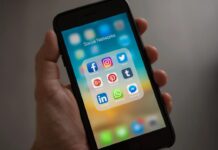Most Americans say they regularly wore a mask in stores in the past month
As states throughout the country take measures toward reopening, public health authorities have highlighted the importance of wearing masks inside shops or other enclosed spaces as a precaution against COVID-19. A vast majority of Americans report they’ve followed this advice all or the majority of the time in the past month; fewer state all or the majority of the people in their communities are wearing masks in comparable configurations, according to a Pew Research Center survey conducted June 4-10, 2020.
Overall, 65 percent of U.S. adults state they’ve personally worn a mask in shops or other businesses all or the majority of the time in the past month, while 15% say they did that a number of the time. Relatively tiny stocks of adults say they hardly ever (9 percent ) or not (7%) wore a mask in the past month, and 4 percent say they haven’t gone to these sorts of places.
Americans in counties with reported deaths in the coronavirus, when adjusted for the population, are considerably more likely to state they wore a mask or the majority of the time in shops or other companies in the past month compared to those in counties in which the death rate could be categorized as more moderate or low (80 percent in high-income counties, compared with 67 percent in moderate – and 55 percent in low-impact counties).
How we did so
Recently, mask-wearing has become a partisan issue. This partisan split can be found in the behaviors of the general public: Democrats and those who lean Democratic are more likely than Republicans and Republican leaners to say they wore a mask all or the majority of the time in the past month (76% vs. 53 percent ). After controlling in the communities Democrats are more likely to say they wear a mask all or the majority of the time.

Republicans are among the month – 49% say they have done so, compared with 60 percent of Republicans. Liberal Democrats are the most likely to state they’ve worn masks (83% say they have done so all or the majority of the time, vs. 71 percent of average Democrats).
Additionally, there are differences across ethnic and racial groups, with whites being the least likely to state they’ve regularly worn masks: 62 percent of white adults say they wore a mask in shops or other businesses all or the majority of the time in the previous month, compared with 69 percent of black adults, 74 percent of Hispanic adults and 80 percent of Asian adults.
College graduates are more likely to report having worn a mask all or the majority of the time (76%) than those with no college degree (60 percent ). Groups are spanned by this education gap. By way of instance, 79 percent of adults say they wore a mask or the majority of the time in the past month, compared with 67 percent of blacks with some college or less. And fully 85 percent of Hispanic college graduates report using regularly worn masks vs. 72 percent of less-educated Hispanics.
Older adults, categorized as high-risk inhabitants by the Centers for Disease Control and Prevention, are more likely than younger adults to say they’ve worn a mask all or the majority of the time in the last month: 74% of those ages 65 and older say they’ve done this, compared with 66 percent of those ages 50 to 64 and about six-in-ten of those 30 to 49 (61%) and 18 to 29 (62%).
This age gap is constant across parties. Among Republicans, a vast majority of those 65 and older (63%) say they’ve worn a mask or the majority of the time in shops or other companies in the past month, compared with 53 percent of Republicans ages 50 to 64 and 47 percent of those ages 30 to 49 and 18 to 29. Though majorities across age groups say they’ve worn a mask all or the majority of the time there are differences among Democrats.
Learn more: THE LARGER THAN LIFE PARK OF PAST PRESIDENTS
When asked more generally about mask-wearing from the communities where they reside, 44 percent of Americans say that all or the majority of the people in their place have been wearing masks in shops or other companies, 40% state that a few folks have been wearing masks, 11% state just a few individuals have been wearing masks and 1% say no one in their area has been wearing a mask.
Americans’ observations concerning behavior that is mask-wearing in the regions vary locally by the severity of COVID-19 health impacts. About six-in-ten adults (62 percent ) who reside in counties with the maximum COVID-19 death rates state that most or all people in their communities are wearing masks, compared with 33 percent of those who reside in areas that have the lowest number of coronavirus deaths per capita.
Among Americans residing in counties with the highest death toll from COVID-19, those in suburban and urban communities (63% and 68%, respectively) are a lot more likely than those residing in rural areas (43%) to say they see most or all people wearing masks.
Facts Check: True










